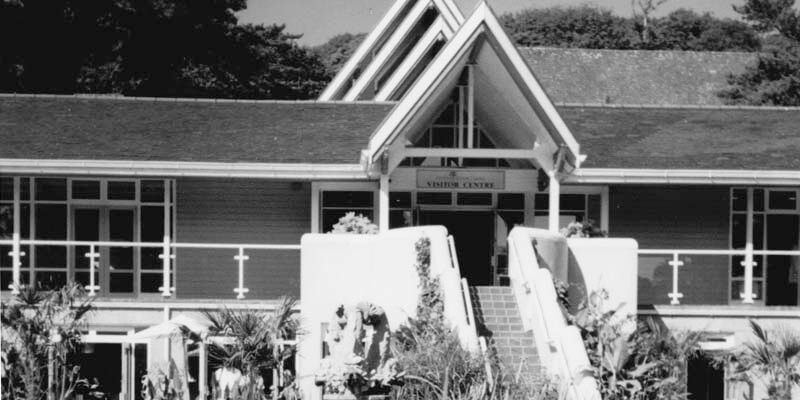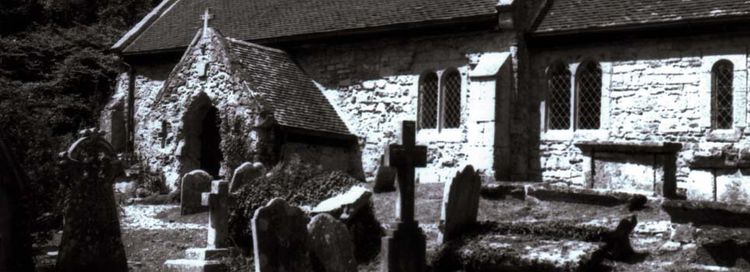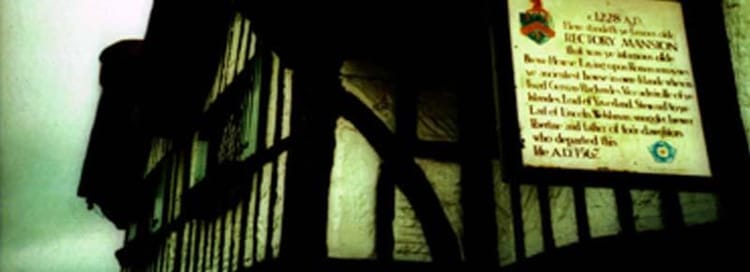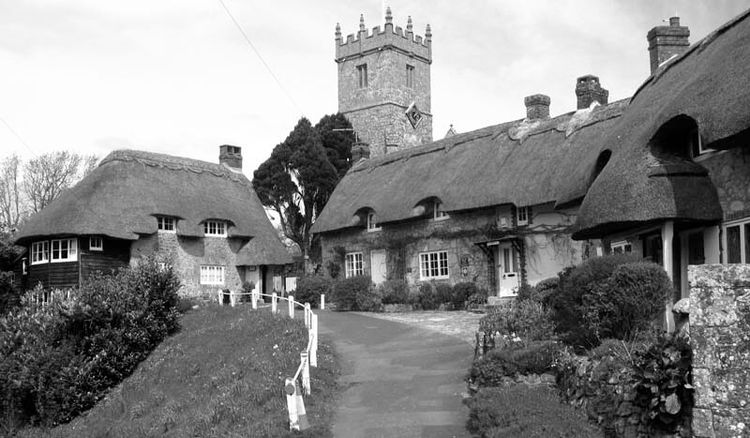Ventnor Botanic Garden. Ghosts of the Isle of Wight, with Margo Williams.

Science versus the Supernatural
SOMETIMES GHOST-BUSTING FAILED. Maybe because it is a fact of de.th that some ghosts have more fun on earth than they expect to find in Heaven.
It may explain why Ventnor’s Botanic Garden is so busily haunted.
This is the Isle of Wight’s paradise, a garden of exquisite bloom and variety located two miles westward from Bonchurch along the Undercliff on the island’s southern sun-drenched sub-tropical coast.
The 22 acre garden opened to public view in 1972 by governor of the island Earl Mountbatten, and some sensitive persons who attended that ceremony had a feeling there were more people present than officially invited, or visible.
In fact there were, and perhaps still are, more ghosts in the Botanic Garden complex than anywhere else on the Isle of Wight.
Some ghosts do not want to leave, they prefer to stay and play. Garden staff are not encouraged to invoke the supernatural as explanation for all the things that happen. They cannot say, ‘Sorry folks things are not working, blame the ghosts.’
That is not acceptable as a reason, not even when expert inspection found no faults, but still the electric lights continued to pop and blow their circuits.
Among the worst paranormal problems was the lift by the staircase. A source of great amusement to the garden ghosts but not for staff and visitors; for it worked without a problem, sometimes.

Trouble in Paradise
During a big garden event the heating system switched off, and supernatural hands then turned off the cookers. During an important meeting, the lift mechanism switched into life and screamed for no-good-reason-whatsoever.
So many light bulbs popped and blew each week, the joke amongst garden staff was to ask not how many curators it takes to change a light bulb, but how many light bulbs to change a curator.
Following a fault, electrical contractors inspected every piece of wiring and circuitry but each inspection confirmed nothing wrong. As much of a mystery as the violent window rattling that happens even on calm, clear sunny days.
But the spookiest thing of all happened soon after the old garden tavern was connected to the power line.
A trench was dug through the car park to lay the main cable, but when the trench was back-filled and that cable connected there was, thereafter, all kinds of electrical problems; and by the following season no power at all.
Ventnor and the Undercliff
Electricians found no reason for why the power wasn’t getting through. In search of an answer they dug up the cable, to find it in perfect condition until they unearthed a section severed into several half-metre pieces.
Engineers who oversaw the work scratched heads in wonder, concluding the high-voltage cable was cut by earth settlement.
However, those who dug the trench stared at the hole and asked how a cable so fat was so easily and so neatly severed. It looked surgical. “Coincidence!” said the chief engineer. “Weird coincidence, yes.”

The fact the power cable ran directly across the site of an old hospital operating theatre had nothing to do with the problem; and the damage - cable severed only within the boundary of that room - was simply another bizarre coincidence.
Some garden staff were not so convinced it was coincidence though all agreed it sure was weird, for when the cable was rerouted around the operating theatre site, the electricity worked without fault.
One gardener suspected the same thing had happened with cabling for their new visitor center, but no one was prepared to try explaining that to the engineer and accountants in head office.
Get the Ghost Hunter
And so, following the umpteenth inspection that revealed no fault with the system, the garden staff contacted me.
People naturally assume a haunting is by only one ghost, but they can and do cluster.
When I was called to come and help the garden staff with their ghost, I thought ‘Which one now?’ Already I had found a half dozen during previous unsolicited visits, each with stories to tell; mostly about that operating theatre.
That room now is no more, but not so long ago it was the bloody core of a hospital a quarter mile long which stood on the site.
Built during the 1860s the Royal National Hospital received patients mostly from London and Middlesex seeking a cure for tuberculosis. By the time it closed in 1964 some 38,000 people had passed through, one way or the other.

Already I had found during previous visits bewildered ghostly nursing staff and patients, but I realised the gardeners wanted me to find the electrical prankster ghost, and so I did.
The clean air and mild climate helped many patients, but far more were not so lucky. Thousands died in the old Royal Hospital and there some have chosen to stay. And who can blame them?
I Don't Believe in Ghosts...But
“Of course,” said the curator to me as we discussed the problem, “I do not believe in ghosts, but I will tell you this: we cannot find any ordinary logical reason for what is going on here.”
His deputy added his own concession: “I have seen things here I cannot explain. I am a total cynic when it comes to ghosts. I am from a scientific background, but in the years I have worked here I have had experiences I cannot put down to ‘Of this world.’”
In some ways, the garden staff and I are as helpless as each other.
On fine days I visit and sit waiting with paper and pencil ready to record their words. Sometimes the ghosts of paradise come to speak and agree to leave.
But others seem more interested in ghostly Ted’s practical teachings on the achievement of ascension, and the challenges of enlightenment.
Or, how to interfere with lift and lightbulbs.
Ted spoke to me at the foot of the stairs beside the lift, and told me of how he came to be there.
“...Am trapped by my own stupidity,” he admitted. “My name is Ted and I was a patient at the hospital. They were so strict, but kind. I was a joker and when I started to recover from that terrible illness I played tricks. Before I was ill I was an apprentice to an electrician. I never became a real electrician.
Why me? I used to say. Why me being taken so ill? I never recovered. Got a chill and it all started again. Blood! Oh the blood! I had one operation, but died.
I decided I would have my revenge and played jokes on nurses and doctors. They never knew it was me. One man and one cleaner got the sack through my jokes. Then I had a little rest until this place was built."
I heard him chuckle.
"Oh the fun of playing tricks! The lights were so easy. I got them that’s here so worried, but suppose I had better stop playing tricks. Never meant harm. Would not hurt anyone.
You seem to hear me. The others do not. Oh well, never mind, will go on to where I may be judged. Not harshly I hope. Goodbye. Sorry for the troubles caused. Could not stop myself. Goodbye.”
Ted now has left the building but even though he’s gone, strange things do still happen here, but it is not the fault of the gardeners or staff, or the electricians. There are ghosts but that is a small price to pay for sharing paradise.
Thank you for your company on this short tour of Isle of Wight mysteries and haunting. If you would like to know more about Margo Williams' investigations in the Botanic Garden and Old Park hotel and other matters of life and death, read this book. Now available from Amazon.

Exploring the haunted Isle of Wight


